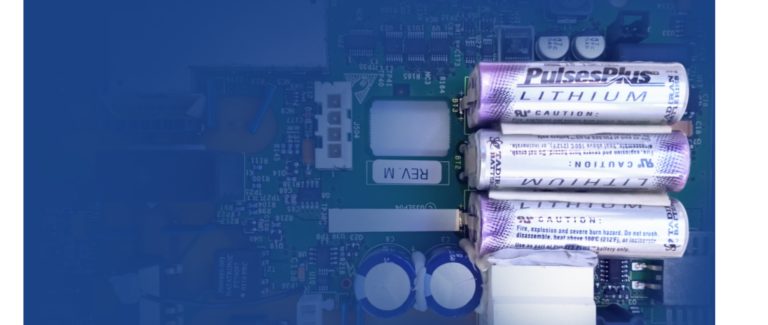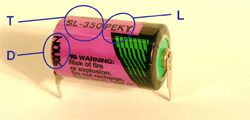Announcements should appear here. Some more information etc.

Technical Information

Technical Information

Technical Information

Technical Information
Instructions in Writing according to ADR are required for road transport of lithium batteries as class 9 dangerous goods, UN 3090. As of 2009, the following applies:
5.4.3 Instructions in writing
5.4.3.1 As an aid during an accident emergency situation that may occur or arise during carriage, instructions in writing in the form specified in 5.4.3.4 shall be carried in the vehicle crew’s cab and shall be readily available.
5.4.3.2 These instructions shall be provided by the carrier to the vehicle crew in language(s) that each member can read and understand before the commencement of the journey. The carrier shall ensure that each member of the vehicle crew concerned understands and is capable of carrying out the instructions properly.
5.4.3.3 Before the start of the journey, the members of the vehicle crew shall inform themselves of the dangerous goods loaded and consult the instructions in writing for details on actions to be taken in the event of an accident or emergency.
5.4.3.4 The instructions in writing shall correspond to the following four page model as regards its form and contents.
The transport of lithium batteries is subject to regulations. As an introduction, we have prepared a Technical Notice which can be downloaded on the right.
Regulations are based on the United Nations Model Regulations on the Transport of Dangerous Goods. The most important regulations can be summarized as follows:
1. C- and D-size cells as well as larger cells and most battery packs have to be transported under dangerous goods regulations.
2. Lithium batteries below 2 g lithium content (corresponding approximately to 3 AA cells) are exempted from dangerous goods regulations but each package requires a special label to indicate that it contains lithium batteries and special procedures shall be followed when a package is damaged during transportation.
3. Transport regulations require that lithium cells and batteries of all kinds, exempted or not, be tested according to the UN test methods.
Packing instructions for air transport of lithium batteries worldwide are revised bienially by the International Civil Aviation Organization (ICAO) and distributed in various languages by the International Air Transport Association (IATA). According to the regulations, Tadiran Lithium Batteries are classified as lithium metal batteries. Different regulations are valid for transport in the USA.
General safety recommendations for lithium batteries have been published in the standards UL 1642 and IEC 60086-4 veröffentlicht.
Tadiran SL-type Lithium Batteries are recognized by UL under file MH 12827. The following text or a modified version thereof appears on each battery:
WARNING:
Fire, explosion, and severe burn hazard. Do not recharge, disassemble, heat above 100 °C, incinerate, or expose contents to water.
Whenever lithium batteries are not the single power source in a circuit the following measures are recommended by the Underwriters Laboratories. The battery should not be connected in series with an electrical power source that would increase the forward current through the battery.
The circuit for these cells shall include one of the following:
A. Two suitable diodes in series with the battery to prevent any reverse (charging)
current. The second diode provides protection if the other one fails.
B. A blocking diode or the equivalent to prevent any reverse (charging) current and a resistor to limit current in case of a diode failure.
The resistor should be sized to limit the maximum reverse (charging) current IR, max to
the values shown in this table.
In addition to this UL requirement which gives the safety limits, Tadiran recommends to limit the reverse (charging) current to values below 10 µA. This will ensure that service life is not affected.
Forced discharge of a cell can occur when it is connected in series with other cells. A by-pass diode should be provided in parallel with each cell in a series connection. The effect of a by-pass diode is that current passes through the diode if a cell has been discharged, preventing forced discharge.
ULFor further information on UL visit UL at www.ul.com.
International Electrotechnical CommissionFor further information regarding the IEC standarts visit the website of the IEC (International Electrotechnical Commission)
at www.iec.ch.

Safety wiring for memory back-up representing case B of UL recommendations
Products manufactured by Tadiran Batteries are marked for the purpose of
identification and tracing. Typically, the marking includes the battery type number, the
lot number as well as the month and year of final inspection. The Figure shows an
example for battery marking.

Battery with type number (T), lot number (L) and date (D) of final inspection.
Orders should be made to the type number and termination.
Example: SL–350/PT
Inquiries with respect to quality should make reference to the lot number.
Example: PEKY
The RoHS directive 2002/95/EC restricts the use of certain Hazardous Substances in electric and electronic equipment. Batteries are formally exempted from the RoHS directive. They are treated according to the battery directive. Lithium batteries, however, are widely used as components in electric and electronic equipment. Tadiran has therefore conducted a voluntary program to implement the European RoHS directive for its products.
A RoHS certificate can be downloaded on the right.
REACH stands for the Registration, Evaluation and Authorisation of Chemicals. This new legislation is intended to standardise and simplify chemicals law throughout Europe. At the same time, however, the state of knowledge about the dangers and risks which may be posed by chemicals is to be improved. The REACH-Regulation was published in the Official Journal of the EU.
Tadiran Lithium batteries are articles according to the REACH regulation.
Article 33 of the REACH regulation requires to communicate information on certain substances in articles.
The European Battery Directive 2006/66/EC restricts the use of certain hazardous substances in batteries and establishes rules for the collection, treatment, recycling and disposal of waste batteries and accumulators. It is transposed individually in each EU member state. For example, transposition in the UK is by the Batteries and Accumulators (Placing on the Market) Regulations 2008 and by the Waste Batteries and Accumulators Regulations 2009. The following information is important for end users of batteries:

Batteries are marked with the crossed-out wheeled bin symbol (see title bar). The symbol reminds end users that batteries must not be disposed as municipal waste, but collected separately. Used batteries can be returned at the point of sale at no charge.
The reason for these regulations is that there are a number of environmental concerns which arise when dealing with the waste management of batteries and accumulators. These relate for the most part to the metals contained in these batteries. Mercury, lead and cadmium are by far the most problematic substances in the battery waste stream. Other metals commonly used in batteries, such as zinc, copper, manganese, lithium and nickel, may also constitute environmental hazards. However, the new regulations apply to all batteries and not just to hazardous ones because all batteries contain substances which are more or less harmful to the environment and because experience with previous regulations showed that ‘all battery’ collection schemes are more efficient than separate schemes for certain types of portable batteries.
Batteries should be recycled because battery recycling helps to save resources by allowing for the recovery of valuable metals such as nickel, cobalt and silver and requires less energy consumption. For example, using recycled cadmium and nickel requires respectively 46 % and 75 % less primary energy than the extraction and refining of virgin metals.
This information is based on the ‘Q&A on the Batteries Directive 2006/66/EC’ document that can be downloaded from the European Commission website under this link:
Link to the European Commission website

Please insert your details and get our catalogue